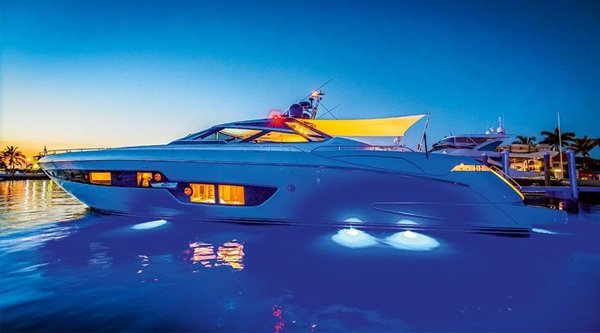Marine underwater lights are often overlooked when discussing the safety and aesthetic enhancements of aquatic environments. Yet, these lights play a crucial role in ensuring the safety of marine activities while simultaneously elevating the beauty of underwater landscapes. As more recreational boaters and divers explore our waters, the need for dependable lighting becomes increasingly paramount. This article delves into the significance of underwater lights, exploring their safety benefits, aesthetic contributions, and the technology behind them.
Safety Benefits of Marine Underwater Lights
One of the primary advantages of marine underwater lights lies in their ability to enhance safety. Whether you’re a boater, diver, or fisherman, having a clear view of your surroundings is crucial. Underwater lights can illuminate potential hazards, such as rocks, reefs, and other obstructions, reducing the risk of accidents. According to the U.S. Coast Guard, a significant percentage of boating accidents occur during night time or low visibility conditions. By utilizing underwater lighting, boaters can navigate more confidently, ensuring a safer experience for themselves and their passengers.
Enhancing Visibility for Nighttime Activities
In addition to improving navigation, marine underwater lights significantly enhance visibility for various nighttime activities, such as fishing. Many anglers use underwater lights to attract fish, as they illuminate the water and create a lively environment that draws in baitfish. This, in turn, attracts larger predator fish, making nighttime fishing more productive. Studies have shown that using underwater lights can increase catch rates significantly, providing a practical benefit for recreational and commercial fishermen alike. This not only enhances the fishing experience but also contributes to the local economy through increased tourism and recreational activities.
Improving Aesthetic Appeal of Aquatic Environments
Beyond safety, underwater lights offer considerable aesthetic value. Illuminating underwater landscapes can transform a mundane diving or boating experience into an enchanting adventure. The vibrant colors of coral reefs and marine life come alive under the glow of underwater lights, creating a captivating visual spectacle. Many resorts and marinas have recognized this aesthetic potential, incorporating underwater lighting into their design to draw in guests and create a stunning ambiance. This trend has gained traction, with underwater lighting systems becoming a popular feature in upscale waterfront properties.
Technological Advancements in Underwater Lighting
The technological advancements in underwater lighting have made these systems more efficient, durable, and versatile. Traditional incandescent bulbs are being replaced with LED technology, which offers numerous benefits. LEDs consume significantly less energy and have a longer lifespan compared to their incandescent counterparts. Additionally, many modern underwater lights are designed to be waterproof, corrosion-resistant, and able to withstand harsh marine environments. Recent studies indicate that LED underwater lights can last up to 50,000 hours, making them a cost-effective solution for both recreational and commercial marine applications.
Environmental Considerations and Sustainable Practices
As the popularity of underwater lighting grows, it’s essential to consider the environmental impact. Some marine ecosystems are sensitive to light pollution, which can disrupt natural behaviors of marine life. For instance, certain species of fish and turtles rely on natural light cues for their breeding and migration patterns. To mitigate these effects, many manufacturers have developed eco-friendly underwater lighting options, such as lights with adjustable intensity and color temperature. Research has shown that using warmer color temperatures can reduce the impact on marine life while still providing adequate illumination for safety and aesthetics.
Installation and Maintenance of Underwater Lights
Installing underwater lights may seem daunting, but with the right approach, it can be a straightforward process. There are various options available, including fixed installations and portable lights that can be easily deployed when needed. When considering installation, it’s important to assess the specific requirements of your environment, such as water depth, the type of marine life present, and your intended use. Regular maintenance is also crucial to ensure optimal performance and longevity. Cleaning the lights periodically and inspecting for any signs of wear and tear can prevent issues and ensure that the lights continue to function effectively.
Cost Considerations for Underwater Lighting Solutions
The cost of marine underwater lighting can vary greatly depending on the type, quality, and installation method. While initial investments might seem high, the long-term savings associated with energy-efficient LED lights and reduced maintenance costs can make them a worthwhile investment. Many boaters and property owners have reported significant returns in terms of enhanced safety, increased recreational opportunities, and improved aesthetic appeal. Additionally, the growing market for underwater lighting solutions has led to increased competition, resulting in more affordable and innovative products being available for consumers.
Conclusion
In conclusion, marine underwater lights serve a dual purpose: enhancing safety and elevating the aesthetics of aquatic environments. From improving navigation for boaters to creating mesmerizing underwater displays for divers, the benefits of these lights are manifold. As technology continues to advance, the options for effective and sustainable underwater lighting are expanding, making it easier for marine enthusiasts to enjoy the beauty of our waters safely. As we move forward, it is vital to balance the enjoyment of marine activities with the preservation of our delicate ecosystems, ensuring that underwater lights contribute positively to both safety and aesthetics in our oceans and waterways.



